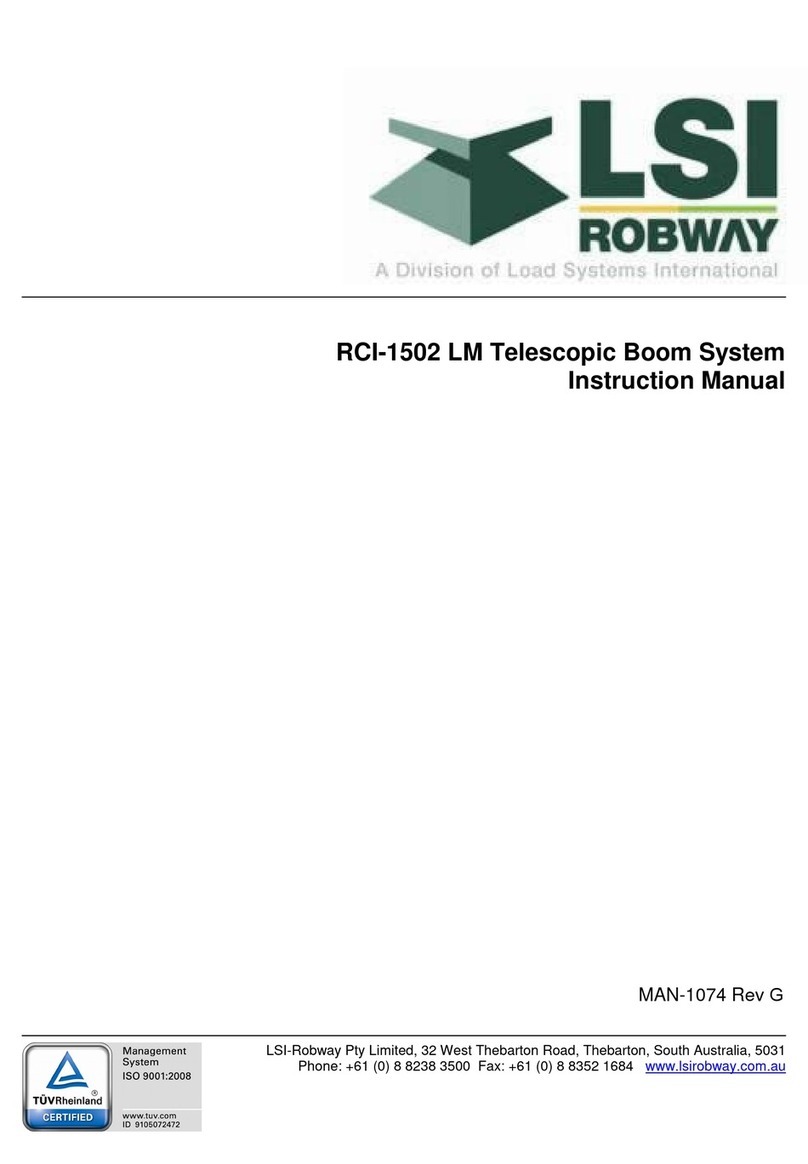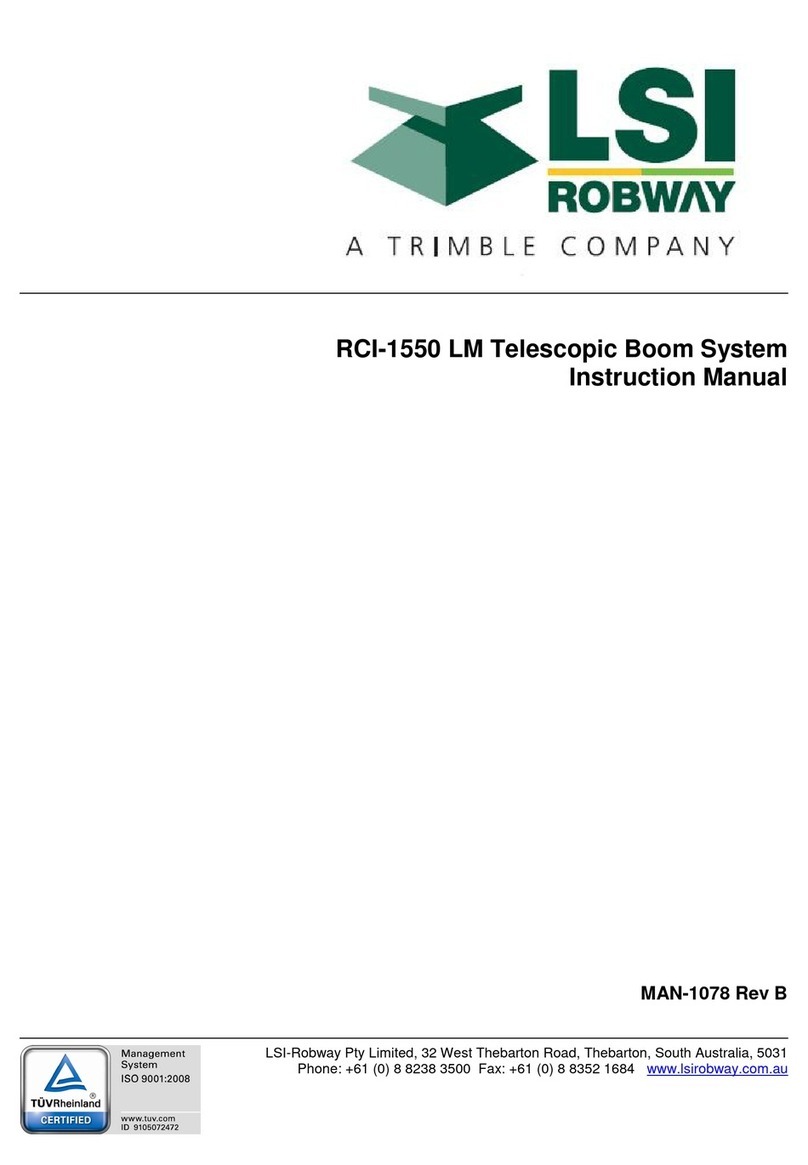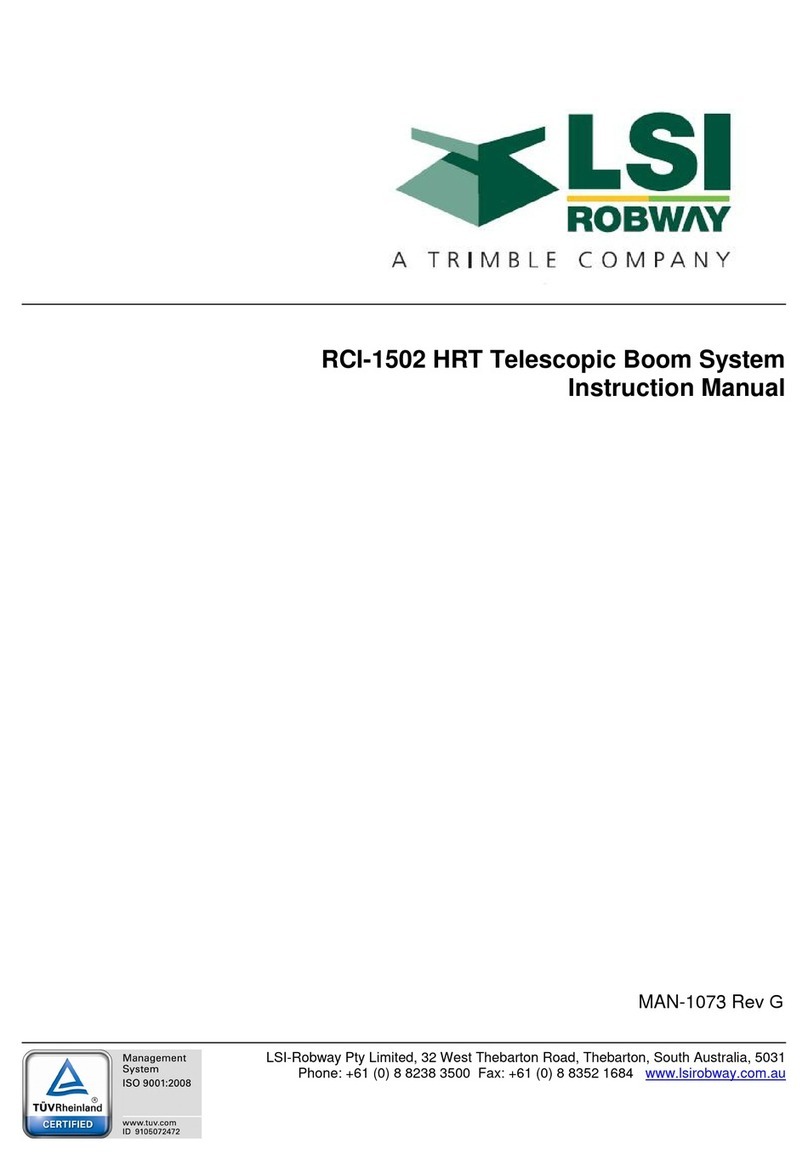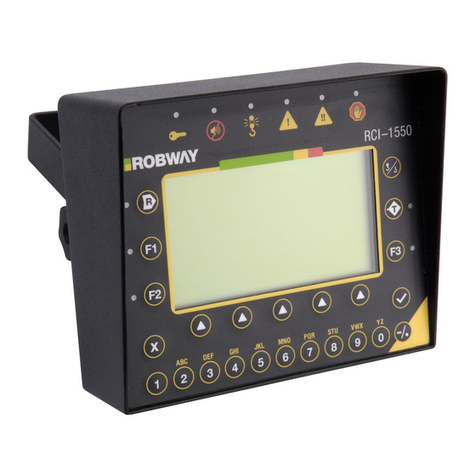
3.4. Display Functions
The RCI-1502 has 2 LCD display windows and 6 front panel push buttons. The
display panel can also be grouped into four parts as follows:
3.4.1. “Approach to Rated Capacity” Indication Lamps
This is the uppermost part of the display which contains three coloured
lamps to indicate “approach to rated capacity”. Factory settings are as
follows:
Green: 50 to 84%, Amber: 85 to 99%, Red: 100 to 110%
Amber lamp flashes when first trip point is reached (i.e. 85%
Rated Capacity) plus an intermittent audible alarm.
Red lamp will flash at 100% of rated capacity plus a continuous
audible alarm.
Red lamp will stop flashing and will stay ON when the lifted load
exceeds 110% of SWL plus a continuous audible alarm. Crane
motion controls are also activated at this stage if fitted.
3.4.2. Numerical LCD for Various Functions
This is a numerical LCD display, just below the indication lamps
mentioned above, which shows the LENGTH, ANGLE, RADIUS,
S.W.L., FALLS, and DUTY status.
This window is also used to display ERROR codes when any errors are
detected. The error function cannot be manually selected but will be
displayed automatically if there are any errors. Please refer to Section
6. “Troubleshooting” for the meaning and description of the error codes.
The above functions are selected by pressing the SELECT button on
the front panel. The selected function is indicated by the lamp next to
the labels. The display functions are as follows:
LENGTH
The numerical display shows the BOOM length, in unit selected (feet or
metres), for the winch selected.
ANGLE
The numerical display shows the current working angle in degrees
which is read from the main boom angle sensor.
RADIUS
The numerical display shows the current working radius, in unit selected
(feet or metres), for the winch selected.
SWL
The numerical display shows the current maximum safe working load in
unit selected (kilopounds or tonnes). The S.W.L. will depend on the
current crane configuration (duty), winch selected (if twin winch), the
maximum linepull and the falls selected.

































